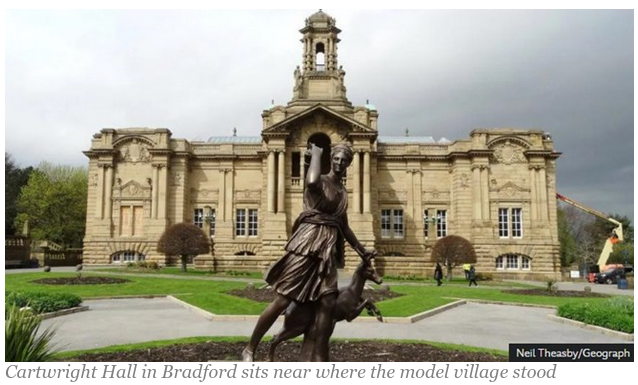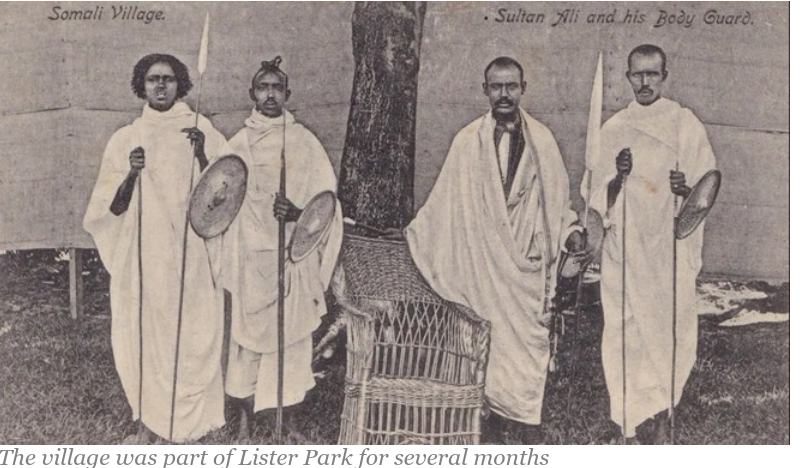
In summer 1904, millions of people descended on Bradford for arguably the biggest festival it has ever seen. Along with typical fairground fun and examples of the city’s industrial might, Bradford Great Exhibition’s biggest draw was also its most bizarre – a living and breathing Somali village.
More than 120 years on, a team of historians are piecing together the stories of those who lived within the walled compound and helping the UK Somali community reclaim the narrative.
Reportedly attracting about 350,000 paid visitors in total, the exhibit transplanted about 100 Somali men, women and children from the Horn of Africa and put them on public display in Lister Park for six months.
“It has resonance as a story of colonised and racialised people who still gazed back and resisted in their own way and had fascinating lives,” says Prof Fozia Bora, from the University of Leeds.
“We are really keen to share the story with Bradfordians and the country at large.”

“Even though the Somali community has existed in different parts of the UK for over 150 years, nobody knew anything about the Somali village in Bradford,” says Zainab Nur, chair of the recently founded Somali Village charity.
“That’s why it needs to be told and shared.”
Together with an online history project, Ms Nur is attempting to reframe the event – “not as a footnote of imperial display, but as a significant episode in the longer history of Somali migration, cultural expression and resistance”.
Ms Nur, who was born to Somali parents and whose forefathers came to the UK during the industrial revolution, says learning about the exhibit raised several key questions.
“I was like, what is this? Are they being exhibited? Were they forced? Was it similar to human zoos?”
The collaborative project and associated charity were officially launched at a recent event at Cartwright Hall, near where the village was located.

The project also aims to trace people who may be descendants of the original village residents, as little is known about what happened to them after the exhibition packed up and left.
Records reveal the group lived in self-built huts and gave daily demonstrations including dancing, spear throwing and archery.
Villagers also displayed their weaving and blacksmithing skills, selling their wares to visitors.
One official report at the time said “they maintained their attractive character throughout, and under the trying conditions of the Yorkshire climate behaved in a most creditable manner”.
Prof Bora, an associate professor of Islamic history, says the team is determined to “reverse the gaze of looking at the other as exotic, strange, weird, even inferior”.
“That is the range of lenses through which the Somalis would have been viewed, as well as fascination and admiration,” she says.
“The project tries to really look at the experience from the Somali point of view.”

Somali Journal in the Netherlands UK branch
Related article: Somali Village Charity
For more information contact us via editorial@somalidutchuk.nl